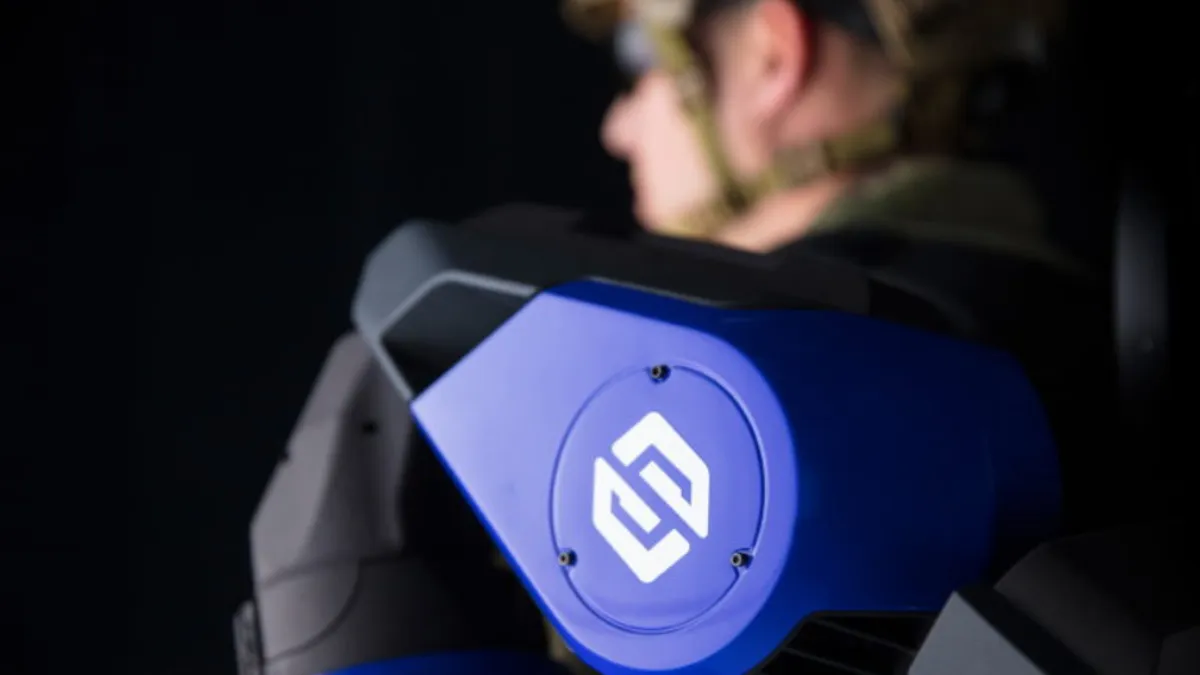Dive Brief:
- In a deal that signals exoskeletons’ continued push into the mainstream, Sarcos Robotics said it will go public through a deal with a special purpose acquisition company Rotor Acquisition Corp. which will provide it with $496 million of proceeds and value the combined venture at $1.3 billion, according to a statement.
- Following on the heels of its large-scale industry exoskeleton Guardian GT robot, Sarcos expects to commercially release its Guardian XO full-body wearable industrial exoskeleton robot in mid-2022, followed later in the year by its Guardian XT highly dexterous force feedback industrial tele-operated robot. The two robots will round out the firm’s commercial lineup, with the aim of delivering a full suite of robots capable of performing physically demanding work that requires human-like skill, dexterity, and range of motion.
- With a focus on augmenting humans for non-repetitive tasks where human decisionmaking is essential, Sarcos’ robotic solutions are designed to enhance individual productivity, making physically demanding jobs safer and more accessible to more people, alleviating skilled worker shortages, and reducing the economic and social impact of occupational injuries, while also equalizing job opportunities for tasks that previously required significant strength and stamina, the firm stated.
Dive Insight:
The development follows the announcement earlier this year from SoftBank-backed robotics firm Berkshire Grey of its own public offering through a similarly structured deal involving a SPAC, which have become increasingly common financing mechanisms on Wall Street, and allow private firms to go public at a later date without the scrutiny of a traditional IPO. It also comes subsequent to mainstream tool maker Hilti entering the market last year, when it announced the launch of its first exoskeleton, the EXO-O1, designed to reduce strain on construction workers.
Exoskeletons first emerged on the market primarily for the manufacturing industry, where prices start at several thousand dollars. Workers completing repetitive tasks can easily strain their joints from overwork. The original vision of bulky, mech suits — similar to ones seen in science fiction movies — quickly transitioned to smaller wearables, without electrical bells and whistles. The smaller suits respond to the movement of the worker automatically using springs and hydraulics.
Sarcos intends to deploy its robot fleet primarily through a Robotics as-a-Service (RaaS) solution, which it expects will accelerate the adoption of its products by offering a scalable source of labor augmentation to support its customers.
“Sarcos is building advanced mobile industrial robotic solutions that will advance the future of the workforce,” said Ben Wolff, Sarcos chairman and CEO, in the statement. “We have a strong foundation and a clear roadmap to launch our next-generation highly dexterous mobile industrial robotic systems that are intended to increase productivity, save lives and reduce injuries."
Stefan M. Selig, chairman of Rotor, said, “We launched Rotor Acquisition Corp. with the goal of identifying and partnering with companies that are leveraging technology and innovation to disrupt ‘old-economy’ businesses in large and growing markets,” in the statement. “Sarcos fits these criteria perfectly, and we are excited to partner with them and create value by building out the Sarcos platform and bringing the company’s robotics technology to the global workforce.”
Key investors in the deal include funds and accounts managed by BlackRock, Millennium Management LLC, Palantir Technologies, Caterpillar Venture Capital, Schlumberger, Michael F. Price, JAWS Estates Capital, Sarcos CEO Ben Wolff and founders of Rotor Acquisition Corp., according to the firm's statement.













